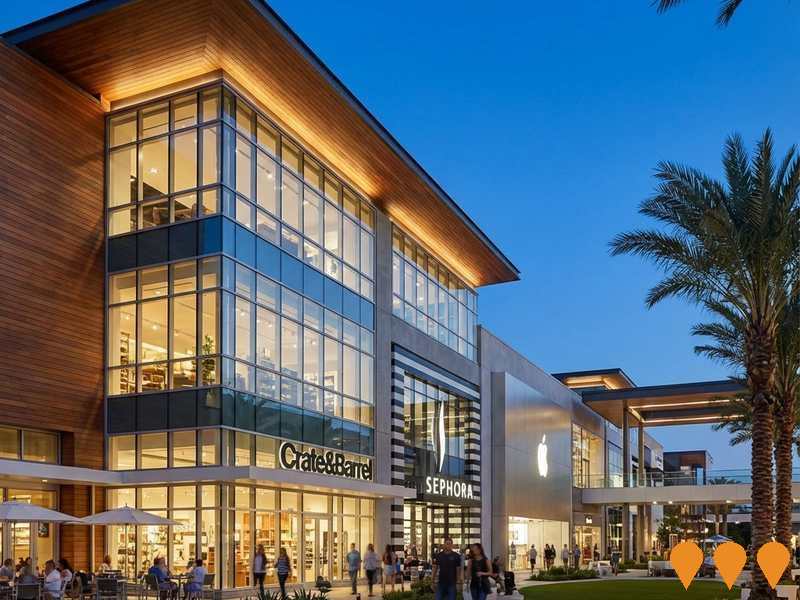Chart Color Schemes
est. as @ -- *
ABS ERP | -- people | --
2021 Census | -- people
Sales Activity
Curious about local property values? Filter the chart to assess the volume and appreciation (including resales) trends and regional comparisons, or scroll to the map below view this information at an individual property level.
Find a Recent Sale
Sales Detail
Population
Nowra lies within the top quartile of areas nationally for population growth performance according to AreaSearch analysis of recent, and medium to long-term trends
Based on AreaSearch's analysis, Nowra's population was around 24,300 as of Nov 2025. This reflected an increase of 1,716 people (7.6%) since the 2021 Census, which reported a population of 22,584 people. The change was inferred from the estimated resident population of 23,650 from the ABS as of June 2024 and an additional 555 validated new addresses since the Census date. This level of population equated to a density ratio of 239 persons per square kilometer, providing significant space per person and potential room for further development. Nowra's 7.6% growth since the 2021 census exceeded the SA4 region (3.7%) and the SA3 area, marking it as a growth leader in the region. Population growth for the area was primarily driven by interstate migration that contributed approximately 36.3% of overall population gains during recent periods, although all drivers including overseas migration and natural growth were positive factors.
AreaSearch is adopting ABS/Geoscience Australia projections for each SA2 area, as released in 2024 with 2022 as the base year. For any SA2 areas not covered by this data, AreaSearch is utilising the NSW State Government's SA2 level projections, as released in 2022 with 2021 as the base year. Growth rates by age group from these aggregations are also applied to all areas for years 2032 to 2041. Moving forward with demographic trends, exceptional growth, placing in the top 10 percent of Australia's regional areas, is predicted over the period with the area expected to increase by 10,884 persons to 2041 based on the latest population numbers, recording a gain of 42.1% in total over the 17 years.
Frequently Asked Questions - Population
Development
AreaSearch assessment of residential development activity positions Nowra among the top 25% of areas assessed nationwide
Nowra has recorded approximately 130 residential properties granted approval annually. Over the past five financial years, from FY-21 to FY-25653 homes were approved, with an additional 18 approved so far in FY-26. On average, around 2.9 people moved to the area per new home constructed over these five years, indicating solid demand that supports property values.
New homes are being built at an average expected construction cost of $224,000, which is under regional levels, suggesting more accessible housing choices for buyers. This financial year has seen $65.8 million in commercial development approvals recorded, indicating robust local business investment. Compared to the rest of NSW, Nowra has 16.0% less new development per person but ranks among the 49th percentile nationally, implying somewhat limited buyer options while strengthening demand for established dwellings. Recent construction comprises 62.0% detached dwellings and 38.0% attached dwellings, showing an expanding range of medium-density options that cater to various price brackets, from traditional family housing to more affordable compact alternatives.
This shift marks a significant departure from existing housing patterns, which are currently 86.0% houses, potentially indicating diminishing developable land availability and responding to evolving lifestyle preferences and housing affordability needs. The location has approximately 330 people per dwelling approval, suggesting room for growth. Future projections indicate that Nowra's population could increase by 10,234 residents by 2041. Should current construction levels persist, housing supply might lag behind population growth, potentially intensifying buyer competition and underpinning price growth.
Frequently Asked Questions - Development
Infrastructure
Nowra has moderate levels of nearby infrastructure activity, ranking in the top 50% nationally
The performance of an area can significantly influenced by changes to local infrastructure, major projects, and planning initiatives. AreaSearch has identified 21 projects that are expected to impact the area. Notable projects include Shoalhaven Hospital Redevelopment, Nowra East Public School Upgrade, Evergreen Rise Estate, and Worrigee Road Subdivision. The following list details those projects likely to be most relevant.
Professional plan users can use the search below to filter and access additional projects.
INFRASTRUCTURE SEARCH
 Denotes AI-based impression for illustrative purposes only, not to be taken as definitive under any circumstances. Please follow links and conduct other investigations from the project's source for actual imagery. Developers and project owners wishing us to use original imagery please Contact Us and we will do so.
Denotes AI-based impression for illustrative purposes only, not to be taken as definitive under any circumstances. Please follow links and conduct other investigations from the project's source for actual imagery. Developers and project owners wishing us to use original imagery please Contact Us and we will do so.
Frequently Asked Questions - Infrastructure
Shoalhaven Hospital Redevelopment
The $438 million Stage 1 redevelopment of Shoalhaven District Memorial Hospital delivers a new seven-storey Acute Services Building, expanded Emergency Department, new Intensive Care Unit, doubled operating theatres and endoscopy suites, new inpatient mental health unit, expanded medical imaging, and refurbished community health services. Construction commenced in early 2024 and is progressing on schedule for completion in 2027.

Nowra Riverfront Precinct Rezoning
Major urban renewal project transforming 3.4 hectares of waterfront land into a mixed-use precinct. The State-assessed rezoning proposal (announced March 2025) will enable up to 270 new homes in the Hyam Street, Scenic Drive, and Bridge Road sub-precincts, mid-rise residential development up to 23 metres, a flagship riverfront park, boardwalk, public realm improvements, leisure facilities, commercial spaces (cafes and accommodation), active transport links, and incorporation of Aboriginal cultural design principles via the Designing with Country Framework. $5 million Federal funding secured for masterplanning and enabling infrastructure. The project reconnects Nowra city centre with the Shoalhaven River, strengthening its role as the regional civic, community, tourism, and recreational hub. (Note: Separate Mandalay Precinct rezoning by Homes NSW may deliver additional housing but is not part of this core riverfront precinct proposal.)

Nowra Showground Enhancements - Horse and Cattle Precinct
Upgrading facilities at the Nowra Showground's Horse and Cattle Precinct to support growing agricultural events, expand cattle exhibitions, attract other breeds and livestock, and improve disabled access for inclusive tourism.
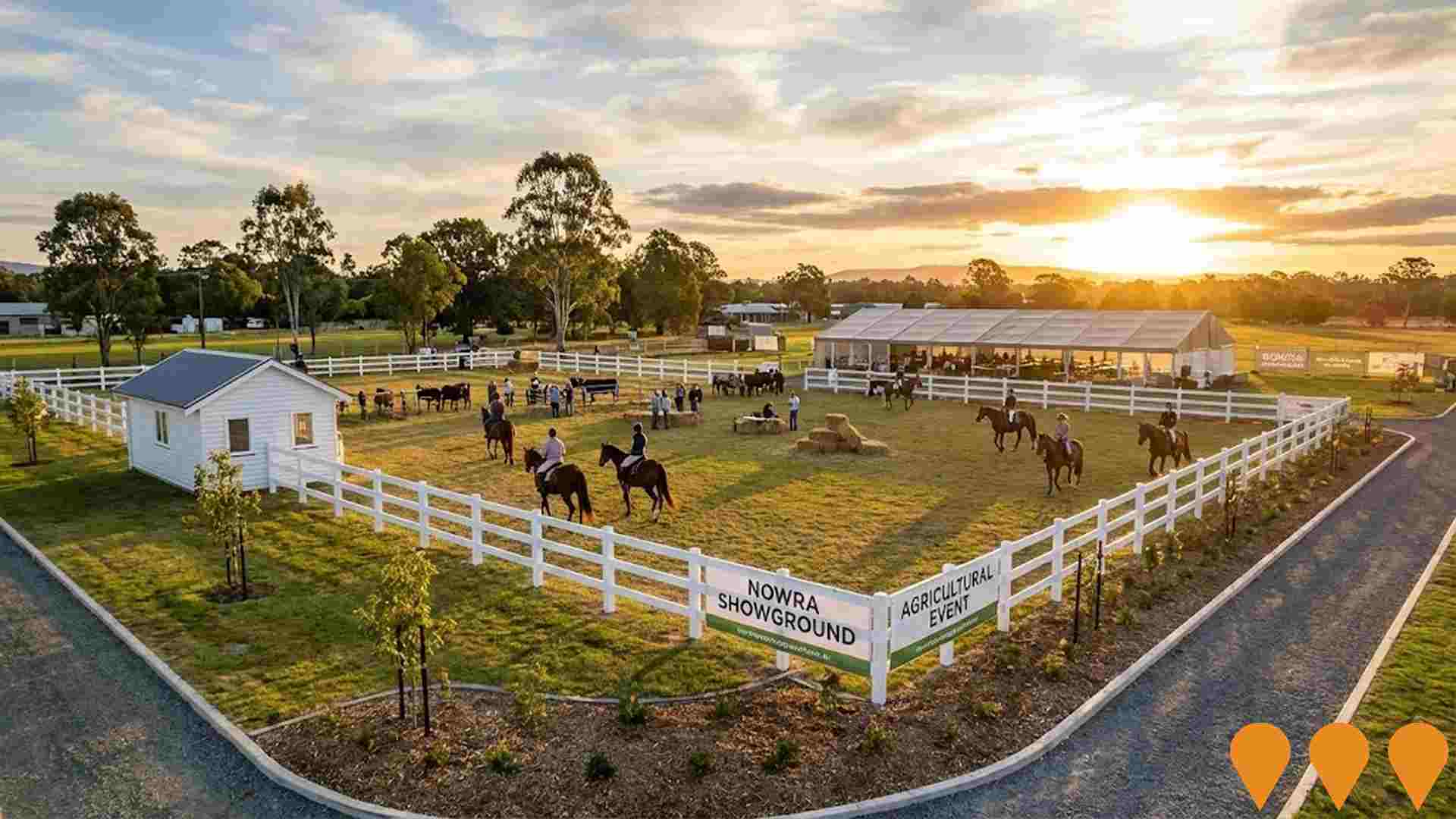
South Nowra Surcharge Main Upgrade
Major sewer infrastructure upgrade including Shoalhaven's deepest pump station (11 metres deep, 5 metres diameter), over 1km of gravity mains, 600m of rising mains, and storage capacity to support 1,000 new residential lots in Worrigee and South Nowra while minimizing overflow risks during severe weather events.

New Primary School and Public Preschool in Worrigee
A new primary school for more than 300 students and a public preschool for up to 60 children per day to serve the growing communities of Worrigee and South Nowra. The school will feature modern classrooms with multipurpose spaces and shared common areas, a multipurpose hall with canteen and covered outdoor learning area (COLA), library, staff and administration facilities, sports field and multipurpose sports court, specialist facilities for support classes, and onsite parking. The preschool will feature three specially designed rooms and a quality outdoor play area, along with an administration area, amenities, staff kitchen and storage. Part of the NSW Government's commitment to deliver 100 new public preschools by 2027, with the preschool expected to open in early 2027 and the primary school opening in 2028.
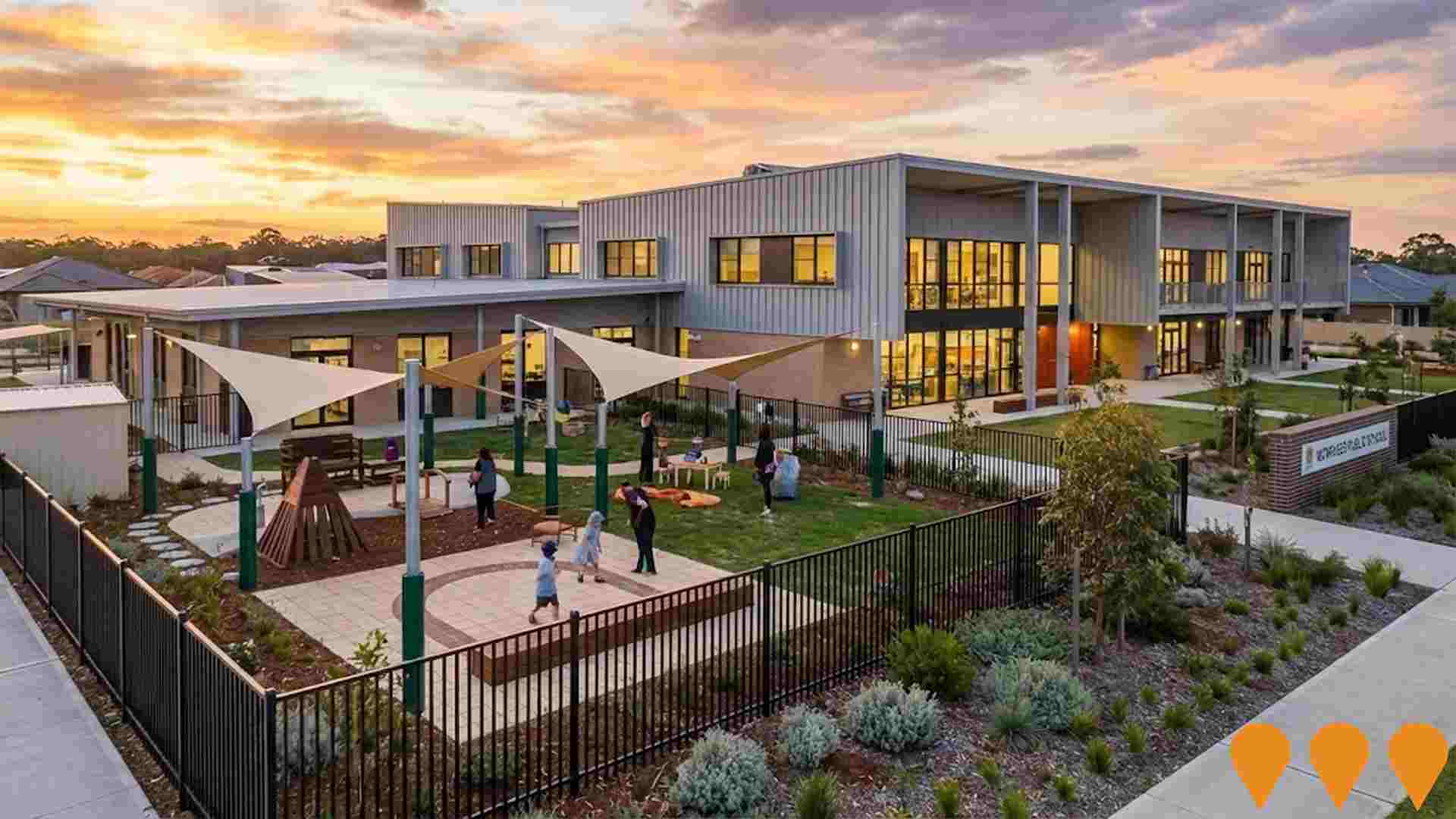
Mandalay Precinct Development
Major residential redevelopment proposal to rezone the Mandalay precinct to deliver up to 380 new homes, comprising approximately 260 social and affordable homes and 120 private dwellings. The project focuses on key worker housing for staff at the adjacent Shoalhaven Hospital following its major redevelopment. The planning proposal is being assessed by the Department of Planning, Housing and Infrastructure under state significant status to fast-track delivery.

Flinders Industrial Estate Expansion (Stage 10 - Norfolk Avenue)
Expansion of the Flinders Industrial Estate at South Nowra, funded by a $3 million NSW Government grant, to subdivide six hectares of land on Norfolk Avenue into eight fully serviced industrial lots. The construction work was completed by local companies, and the lots have been sold to businesses, including manufacturing and construction companies, to stimulate job creation and economic growth in the Shoalhaven region.
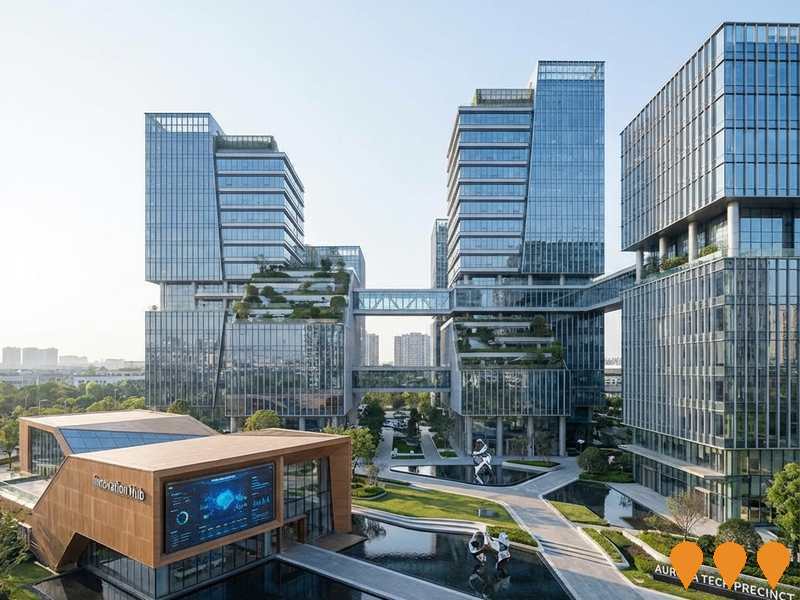
Nowra East Public School Upgrade
Major upgrade project for Nowra East Public School serving 420 students. Multimillion-dollar upgrade - largest since school built in 1964. Works likely to include new permanent classrooms, support learning spaces, and refurbishment of existing facilities. Part of NSW Government's regional school infrastructure program to improve educational facilities and meet growing demand.
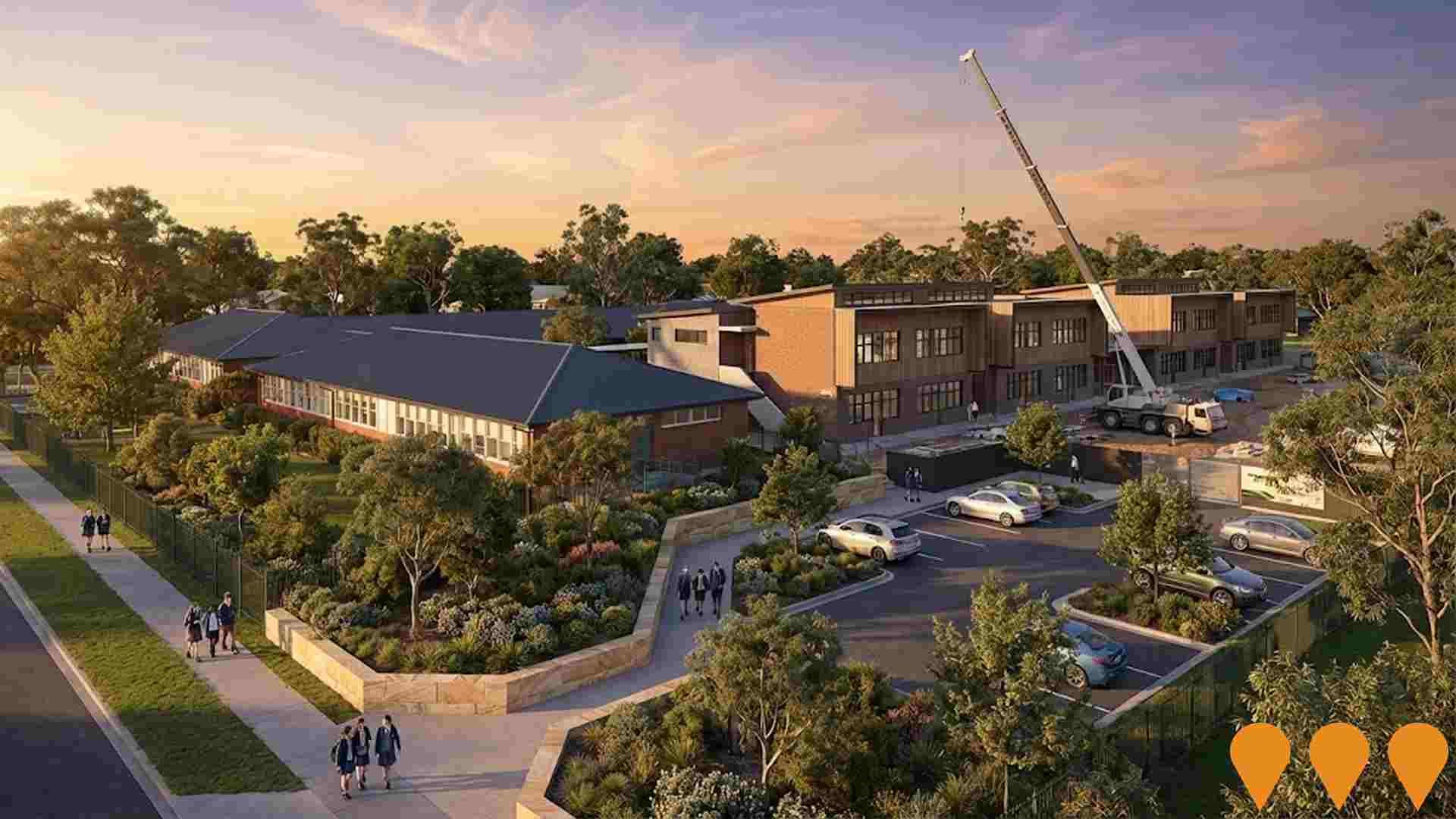
Employment
Employment conditions in Nowra remain below the national average according to AreaSearch analysis
Nowra's workforce is balanced across white and blue-collar jobs, with prominent representation in essential services sectors. The unemployment rate was 3.7% as of June 2025, aligning with Rest of NSW's rate.
Employment growth over the past year was estimated at 4.3%. As of June 2025, 9,605 residents were employed, with a workforce participation rate of 51.3%, lower than Rest of NSW's 56.4%. Leading employment industries among residents include health care & social assistance, public administration & safety, and retail trade. Public administration & safety has notable concentration, with employment levels at 1.9 times the regional average.
Agriculture, forestry & fishing is under-represented, comprising only 1.2% of Nowra's workforce compared to 5.3% in Rest of NSW. The ratio of 0.8 workers per resident indicates higher-than-average local employment opportunities. Between June 2024 and June 2025, employment increased by 4.3%, while the labour force grew by 2.6%, leading to a 1.6 percentage point drop in unemployment rate. In contrast, Rest of NSW saw employment decline by 0.1% and labour force growth of 0.3%, with a 0.4 percentage point rise in unemployment rate. Jobs and Skills Australia's national employment forecasts from May 2025 project overall employment growth of 6.6% over five years and 13.7% over ten years, but industry-specific projections vary significantly. Applying these projections to Nowra's employment mix suggests local growth of approximately 6.4% over five years and 13.4% over ten years.
Frequently Asked Questions - Employment
Income
Income figures position the area below 75% of locations analysed nationally by AreaSearch
AreaSearch's latest postcode level ATO data for financial year 2022 shows that Nowra's median income is $46,946 and the average income is $57,818. This contrasts with Rest of NSW's figures where the median income is $49,459 and the average income is $62,998. Based on a 12.61% growth in Wage Price Index since financial year 2022, estimated incomes for Nowra as of September 2025 would be approximately $52,866 (median) and $65,109 (average). According to Census 2021 income data, household, family, and personal incomes in Nowra all fall between the 20th and 21st percentiles nationally. The predominant income cohort in Nowra spans 30.2% of locals (7,338 people) with incomes ranging from $1,500 to $2,999. Housing affordability pressures are severe in Nowra, with only 80.7% of income remaining after housing costs, ranking at the 18th percentile nationally.
Frequently Asked Questions - Income
Housing
Nowra is characterized by a predominantly suburban housing profile, with a higher proportion of rental properties than the broader region
In Nowra, as per the latest Census evaluation, 86.3% of dwellings were houses, with 13.6% being semi-detached, apartments, or other types. In comparison, Non-Metro NSW had 87.8% houses and 12.2% other dwellings. Home ownership in Nowra stood at 30.0%, with mortgaged dwellings at 30.1% and rented ones at 39.9%. The median monthly mortgage repayment was $1,733, aligning with Non-Metro NSW's average, while the median weekly rent was $330, compared to Non-Metro NSW's $350. Nationally, Nowra's median monthly mortgage repayment was lower at $1,733 than the Australian average of $1,863, and its median weekly rent was substantially lower at $330 than the national figure of $375.
Frequently Asked Questions - Housing
Household Composition
Nowra has a typical household mix, with a higher-than-average median household size
Family households account for 68.3% of all households, including 26.5% couples with children, 25.4% couples without children, and 15.0% single parent families. Non-family households make up the remaining 31.7%, with lone person households at 28.3% and group households comprising 3.5%. The median household size is 2.5 people, larger than the Rest of NSW average of 2.3.
Frequently Asked Questions - Households
Local Schools & Education
Educational outcomes in Nowra fall within the lower quartile nationally, indicating opportunities for improvement in qualification attainment
The area's university qualification rate is 15.5%, significantly lower than the NSW average of 32.2%. This disparity presents both a challenge and an opportunity for targeted educational initiatives. Bachelor degrees are most prevalent at 10.5%, followed by postgraduate qualifications (3.1%) and graduate diplomas (1.9%). Vocational credentials are prominent, with 44.4% of residents aged 15+ holding such qualifications, including advanced diplomas (10.4%) and certificates (34.0%).
Educational participation is high, with 33.1% of residents currently enrolled in formal education. This includes 12.3% in primary education, 8.7% in secondary education, and 3.4% pursuing tertiary education. Eleven schools serve 4,594 students in the area, which has varied educational conditions across Nowra. The educational mix comprises 6 primary, 4 secondary, and 1 K-12 school. School capacity exceeds typical residential needs (19.1 places per 100 residents vs 12.8 regionally), indicating that the area serves as an educational center for the broader region. Note: where schools show 'n/a' for enrolments, please refer to the parent campus.
Frequently Asked Questions - Education
Schools Detail
Nearby Services & Amenities
Transport
Transport servicing is moderate compared to other areas nationally based on assessment of service frequency, route connectivity and accessibility
Transport analysis shows 291 active transport stops in Nowra, serving a mix of bus routes. These are covered by 63 individual routes, offering 1,542 weekly passenger trips. Transport accessibility is rated excellent, with residents typically located 146 meters from the nearest stop.
Service frequency averages 220 trips per day across all routes, equating to approximately five weekly trips per stop.
Frequently Asked Questions - Transport
Transport Stops Detail
Health
Health performance in Nowra is a key challenge with a range of health conditions having marked impacts on both younger and older age cohorts
Critical health challenges are evident across Nowra, with various health conditions impacting both younger and older age cohorts. The rate of private health cover is relatively low at approximately 49% of the total population (around 11,882 people), compared to the national average of 55.3%.
Mental health issues and arthritis are the most common medical conditions in the area, affecting 11.8 and 10.1% of residents respectively. Around 60.2% of residents declare themselves completely clear of medical ailments, slightly higher than the 59.4% across Rest of NSW. The percentage of residents aged 65 and over is 16.9%, which translates to approximately 4,099 people, lower than the 27.8% in Rest of NSW. Health outcomes among seniors present some challenges, broadly in line with the general population's health profile.
Frequently Asked Questions - Health
Cultural Diversity
Nowra ranks below the Australian average when compared to other local markets across a number of language and cultural background related metrics
Nowra's cultural diversity was found to be below average, with 84.5% of its population being Australian citizens, born in Australia, and speaking English only at home. Christianity is the predominant religion, accounting for 50.9% of Nowra's population. The most notable overrepresentation is in the 'Other' category, comprising 0.9% compared to the Rest of NSW's 0.5%.
In terms of ancestry, Australian (31.8%), English (29.3%), and Australian Aboriginal (7.7%) are the top three groups represented. Some ethnic groups show notable divergences: Maltese at 0.6%, Lebanese at 0.2%, and Filipino at 0.9% compared to regional averages of 0.6%, 0.1%, and 0.6% respectively.
Frequently Asked Questions - Diversity
Age
Nowra's population is slightly younger than the national pattern
The median age in Nowra is 36 years, which is significantly lower than Rest of NSW's average of 43 years and somewhat younger than Australia's median age of 38 years. The 25-34 age group constitutes 16.4% of Nowra's population, compared to the Rest of NSW figure, while the 65-74 cohort makes up 8.7%. According to post-2021 Census data, the 25-34 age group has increased from 14.8% to 16.4%, and the 35-44 cohort has risen from 12.1% to 13.5%. Conversely, the 65-74 cohort has decreased from 9.6% to 8.7%. Population forecasts for Nowra indicate substantial demographic changes by 2041. Notably, the 25-34 age group is projected to grow by 54%, adding 2,132 people and reaching a total of 6,113 from its current figure of 3,980.


